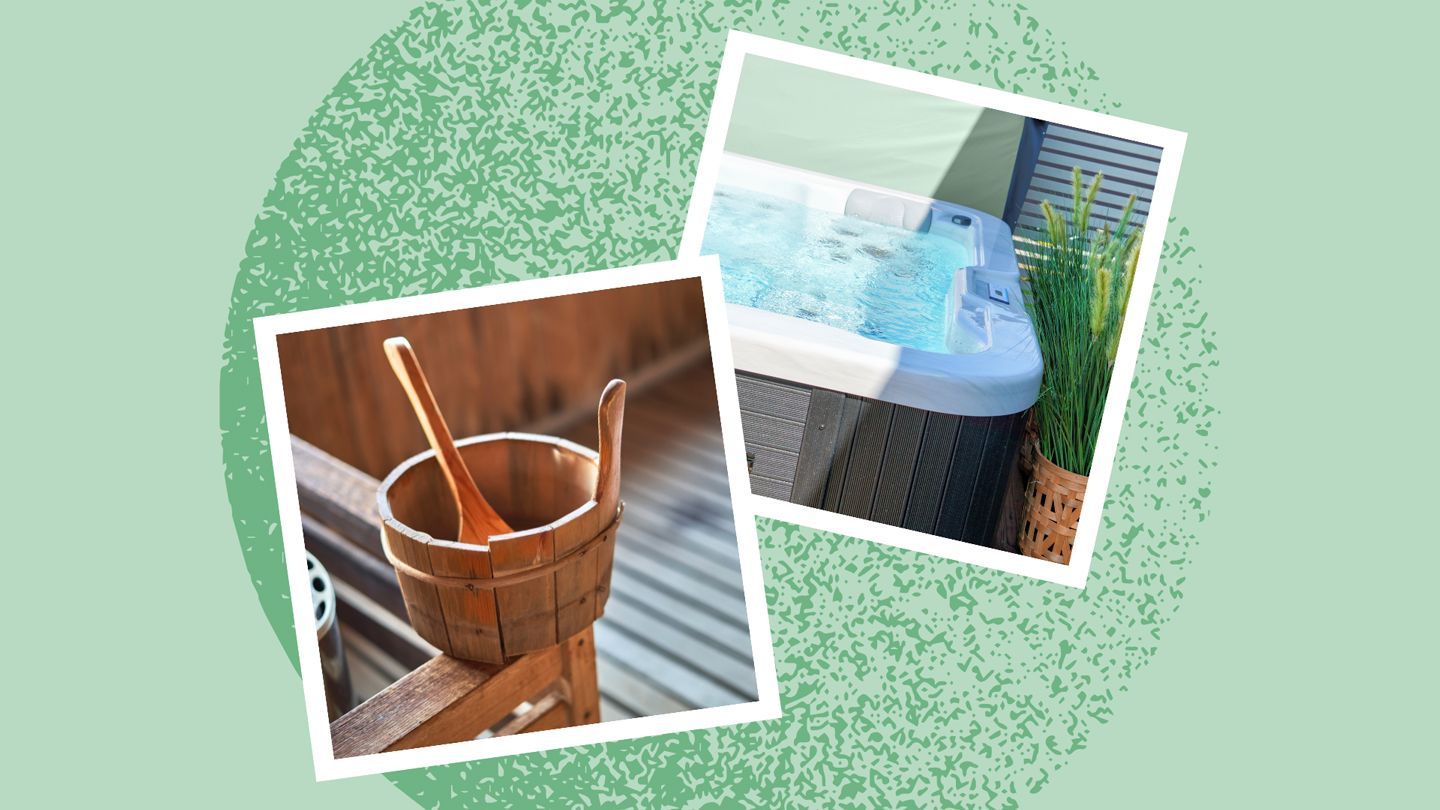For some people with rheumatoid arthritis (RA) , using a sauna or hot tub regularly — applying heat to large areas of the body — may help improve RA symptoms and overall well-being.e60dc2a1-f33c-4a05-9b50-8e3e8e59762941ce1151-421b-4e48-be4e-40f2d5ed6d4b The benefits of saunas and hot tubs for people with RA can include improved joint mobility and stress reduction. But sauna and hot tub use also carries certain risks that you should be aware of, including worsening certain heart-related issues and the possibility of developing an infection. Here’s what to know if you’re considering adding one of these types of heat therapy to your self-care routine.
Benefits of Saunas and Hot Tubs for RA Sauna and Hot Tub Benefits Using a sauna or hot tub is a way to apply heat to large areas of your body, including your skin and underlying tissues, such as your muscles. Saunas are heated chambers that typically have built-in wooden seating, while hot tubs contain warm water and usually have jets that shoot streams of water underneath the surface. “Warmth can cause muscle relaxation, which can be beneficial [for people with rheumatoid arthritis],” says Kevin Deane, MD , a rheumatologist at University of Colorado Health in Aurora. While it’s not entirely clear why some people with RA experience improved joint mobility from using a sauna or hot tub, some or most of this effect may be explained by improved muscle function, Dr. Deane says. “Typically, we don’t think the muscles are a major target of inflammation in rheumatoid arthritis, but muscles are in and around joints,” says Deane. “If a joint is inflamed and not working very well, then the muscles around that joint can also get irritated.” Finnish and Infrared Saunas One research review found that sauna therapy — particularly two varieties, known as Finnish and infrared — has been shown to reduce pain and stiffness and improve mobility in people with RA.e60dc2a1-f33c-4a05-9b50-8e3e8e597629a6465489-a16e-45a4-8312-a18f50825891 Traditional Finnish sauna therapy involves several sessions in the sauna, each lasting around 10 minutes, broken up by periods of cooling off. Inside the sauna, water may be poured on the stove or heating element to create steam and increase humidity, and people may pat their skin with a bundle of small leafy birch tree branches (known as a whisk, or a vasta or vihta in Finland). This is supposed to help with relaxation and blood circulation, similar to a massage.e60dc2a1-f33c-4a05-9b50-8e3e8e5976297ec4925f-baac-4c26-aec5-e78949768223 An infrared sauna , on the other hand, uses a special wavelength of light to heat your body directly, rather than heating the air around you. This lets you experience the effects of sauna therapy — including an increased heart rate and circulation — without high air temperatures, which may be a safer or more comfortable option for some people.e60dc2a1-f33c-4a05-9b50-8e3e8e597629b6d0037a-bad0-4cae-990f-95d138f91a43 A small study found that in participants with rheumatoid arthritis who received eight sessions of infrared sauna therapy over four weeks, there were improvements in pain, stiffness, and fatigue — but these improvements were not clinically significant, meaning they didn’t have a meaningful impact on the study subjects’ health and well-being. There were also no changes in disease activity scores, indicating limited benefits but also no major risks.e60dc2a1-f33c-4a05-9b50-8e3e8e5976293fc1586a-4d11-4caf-96fe-874faca2bba8 More studies are needed to determine the significance of infrared sauna therapy. Hot Tubs While hot tubs haven’t been studied as much in the context of rheumatoid arthritis, they may have similar benefits to sauna therapy. “Hot tubs can help ease pain and stiffness of the joints,” says Talia Torkian, PA , a rheumatology physician assistant at Mount Sinai in New York City. Hot tubs may also lead to relaxation and a sense of well-being, which can be especially helpful for people with pain and stiffness. “It’s an overall body warmth, the jets, and the weightlessness [from floating in water],” says Deane. “All of those things might be beneficial.”
Risks of Saunas and Hot Tubs for RA Risks of Saunas and Hot Tubs While saunas and hot tubs can be beneficial for rheumatoid arthritis and overall well-being, each type of therapy carries potential health risks. Always review the use of saunas or hot tubs with your healthcare team if you have any chronic medical illness. Cardiac Risks “There are cardiac risks to being in heated water for more than 10 to 15 minutes,” says Torkian. “Since RA affects all organs, especially the heart , they have to be more cautious.” Dehydration Similarly, it’s a good idea to limit sauna sessions to about 10 minutes, taking breaks to cool off outside the sauna before going back inside. If you feel dizzy from the heat or temperature change, you may need to cut your sauna time short or spend more time cooling off. And make sure to drink plenty of fluids to prevent dehydration .e60dc2a1-f33c-4a05-9b50-8e3e8e597629fb666537-0058-4556-9d3d-558671b49b59 Infections Since hot tubs involve being submerged in water, they carry a potential infection risk if the water isn’t properly treated (usually with chlorine or salt). This may be especially true if your immune system is compromised by a medication you take for RA or another health condition. In addition to skin infections like folliculitis , hot tubs can lead to respiratory infections from inhaling steam that contains bacteria or viruses. “That’s something we think about if people with rheumatoid arthritis develop lung issues — are they in a hot tub a lot?” says Deane. In theory, he says, saunas with steamy air and multiple people inside could also carry a risk of respiratory infection. Difficulty Getting Out People with mobility challenges should be especially cautious about using hot tubs, since you may not realize ahead of time that you’ll have difficulty getting out — possibly due in part to the muscle relaxation that can occur. “They can use a hot tub, but with help and assistance from someone else there,” says Torkian. Safer Alternatives For some people with an increased heart or infection risk, taking a warm bath or shower at home may be a better alternative to using a hot tub. Try soaking in a warm bath for 15 to 20 minutes, or using a specialized showerhead that’s designed to channel water in a way that massages your body.e60dc2a1-f33c-4a05-9b50-8e3e8e597629a785c7e3-4004-4b2d-bb7c-09ff82571ad6
How to Use a Sauna Safely When You Have RA How to Use a Sauna Safely Here are some tips for using a sauna safely and effectively:e60dc2a1-f33c-4a05-9b50-8e3e8e5976292f2a5c26-02d2-440d-82de-1d503984a1fce60dc2a1-f33c-4a05-9b50-8e3e8e5976299ec6eb04-bc53-499b-9074-211a587144ee Shower beforehand, and sit on a towel in the sauna. Limit sauna sessions to about 10 minutes. Take adequate time to cool off between sauna sessions. Don’t use a sauna after a heavy meal or drinking alcohol. Drink plenty of fluids before and after using a sauna. Have a light snack afterward, especially if you feel tired or lightheaded. Remove any small bandages before using a sauna (since they can fall off from sweating), and replace them afterward. Talk to your doctor before trying sauna therapy, especially if you have heart disease or take any medications for high blood pressure .
How to Use a Hot Tub Safely When You Have RA How to Use a Hot Tub Safely It’s a good idea to follow these safety tips when using a hot tub:e60dc2a1-f33c-4a05-9b50-8e3e8e59762991a705d8-d05d-4fad-9fb2-d735be1fa99b Shower before and after using a hot tub, to reduce your infection risk. Limit your time in the hot tub to about 10 or 15 minutes. Make sure someone nearby can assist you if you have mobility challenges. Don’t drink alcohol before or during your time in a hot tub. Talk to your doctor before using a hot tub regularly, especially if you have any cardiovascular, respiratory, or gastrointestinal health problems.
The Takeaway Both saunas and hot tubs may improve joint pain and stiffness associated with RA. They can also promote overall relaxation and well-being. Saunas and hot tubs do carry some risks for people with heart disease or high blood pressure, and hot tubs especially may raise the risk of skin and respiratory infections. Check with your doctor before adding regular hot tub or sauna use to your routine.
Read the full article here
Leave a comment




